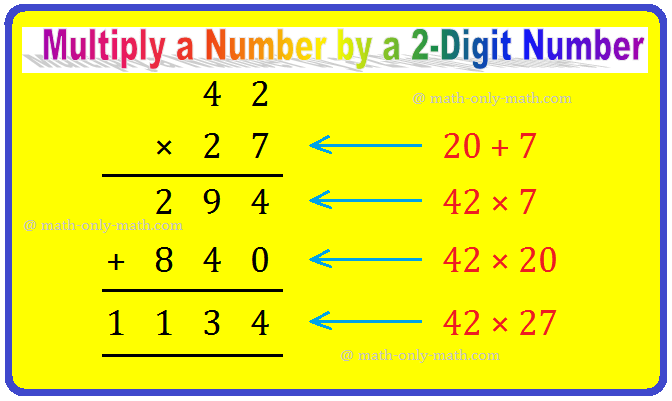Trigonometric Ratios of an Angle
We will learn how to find the values of trigonometric ratios of an angle. The questions are related to find the values of trigonometric functions of a real number x (i.e., sin x, cos x, tan x, etc.) at any values of x.
1. Find the values of cos (−11Π3)
Solution:
cos (−11Π3) = cos (11Π3), since cos (- θ) = cos θ
= cos (11×180°3)
= cos (1980°3)
= cos 660°
= cos (7 × 90° + 30°)
= sin 30°, [Since the angle 660° lies in the 4th quadrant and cos ratio is positive in this quadrant. Again, in the angle 660° = 7 × 90° + 30°, multiplier of 90° is 7, which is an odd integer ; for this reason cos ratio has changed to sin.]
= 1/2
2. Find the values
of cot (- 855°)
Solution:
cot (- 855°) = - cot
855° [since, cot (-θ) = - cot θ]
= - cot (9 × 90° + 45°)
= - (- tan 45°) [Since the angle 855° = 9 × 90° + 45° lies in the second quadrant and only sin and csc ratios are positive in the second quadrant, thus cot ratio has become negative. Again, in 855° = 9 x 90° + 45°, the number 9 i.e., an odd integer appears as a multiplier of 90°; for this reason cot ratio has changed to tan.]
= tan 45°
= 1.
3. Find the values of csc (-1650°)
Solution:
csc (-1650°) = - csc 1650°, [since, csc (-θ) = - csc θ]
= - csc (18 × 90° + 30°)
= - (- csc 30°), [Since, the angle 1650° lies in the 3th quadrant and csc ratio is negative in this quadrant. Again, in 1650° = 18 × 90° + 30°, multiplier of 90° is 18, which is an even integer; for this reason csc ratio remains unaltered.]
= csc 30°
= 2
4. If sin 49° = 3/4, find the value of sin 581°.
Solution:
sin 581° = sin (7 × 90° - 49°)
= - cos 49°, [Since the angle 581° = 7 × 90° - 49° lies in the 3rd quadrant and only tan and cot ratios are positive in the 3rd quadrant, thus sin ratio has become negative. Again, in 581° = 7 × 90° - 49°, the number 7 i.e., an odd integer appears as a multiplier of 90°; for this reason sin ratio has changed to cos.]
= - √(1- sin2 49°)
= - √1−(34)2
= = - √1−916
= - √16−916, [since, sin 49° = ¾]
= √74
● Trigonometric Functions
- Basic Trigonometric Ratios and Their Names
- Restrictions of Trigonometrical Ratios
- Reciprocal Relations of Trigonometric Ratios
- Quotient Relations of Trigonometric Ratios
- Limit of Trigonometric Ratios
- Trigonometrical Identity
- Problems on Trigonometric Identities
- Elimination of Trigonometric Ratios
- Eliminate Theta between the equations
- Problems on Eliminate Theta
- Trig Ratio Problems
- Proving Trigonometric Ratios
- Trig Ratios Proving Problems
- Verify Trigonometric Identities
- Trigonometrical Ratios of 0°
- Trigonometrical Ratios of 30°
- Trigonometrical Ratios of 45°
- Trigonometrical Ratios of 60°
- Trigonometrical Ratios of 90°
- Trigonometrical Ratios Table
- Problems on Trigonometric Ratio of Standard Angle
- Trigonometrical Ratios of Complementary Angles
- Rules of Trigonometric Signs
- Signs of Trigonometrical Ratios
- All Sin Tan Cos Rule
- Trigonometrical Ratios of (- θ)
- Trigonometrical Ratios of (90° + θ)
- Trigonometrical Ratios of (90° - θ)
- Trigonometrical Ratios of (180° + θ)
- Trigonometrical Ratios of (180° - θ)
- Trigonometrical Ratios of (270° + θ)
- Trigonometrical Ratios of (270° - θ)
- Trigonometrical Ratios of (360° + θ)
- Trigonometrical Ratios of (360° - θ)
- Trigonometrical Ratios of any Angle
- Trigonometrical Ratios of some Particular Angles
- Trigonometric Ratios of an Angle
- Trigonometric Functions of any Angles
- Problems on Trigonometric Ratios of an Angle
- Problems on Signs of Trigonometrical Ratios
11 and 12 Grade Math
From Trigonometric Ratios of an Angle to HOME PAGE
Didn't find what you were looking for? Or want to know more information about Math Only Math. Use this Google Search to find what you need.
Recent Articles
-
Properties of Multiplication and Division of Fractions Worksheet | Ans
Apr 10, 25 03:17 PM
In properties of multiplication and division of fractions worksheet you will get different types of questions based on properties of multiplication of fractional numbers and properties of division of… -
Word Problems on Fraction | Math Fraction Word Problems |Fraction Math
Apr 09, 25 01:44 AM
In word problems on fraction we will solve different types of problems on multiplication of fractional numbers and division of fractional numbers. -
Multiply a Number by a 2-Digit Number | Multiplying 2-Digit by 2-Digit
Apr 08, 25 01:13 PM
How to multiply a number by a 2-digit number? We shall revise here to multiply 2-digit and 3-digit numbers by a 2-digit number (multiplier) as well as learn another procedure for the multiplication of… -
Multiplication | How to Multiply a One, Two or Three-digit Number?
Apr 08, 25 01:08 PM
In multiplication we know how to multiply a one, two or three-digit number by another 1 or 2-digit number. We also know how to multiply a four-digit number by a 2-digit number. We also know the differ… -
Addition of 4-Digit Numbers | 4-Digit Addition |Adding 4-Digit Numbers
Apr 08, 25 12:43 PM
We will learn about the addition of 4-digit numbers (without carrying and with carrying). We know how to add 2 or 3, 3-digit numbers without carrying or with carrying.



New! Comments
Have your say about what you just read! Leave me a comment in the box below. Ask a Question or Answer a Question.